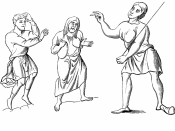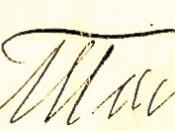A Serf ... a person bound to a land and remains when it is sold.
Serfdom was a part of Russia, since the Mongol invasion. The system originated during feudal times and was a means of protection and income for vulnerable peasants. By the early 18th century, much of Western Europe had abandoned serfdom. Russia however, continued in its society of serfs.
There were 3 types of serfs, state peasants that worked for the government, proprietary serfs, and house peasants like Geraism, a character in the story. While the government would send state peasants to perform jobs which had few willing employees, most peasants worked on farms. Other serfs worked as cooks or nannies and some were even artists and musicians. Serfs were generally illiterate. We say generally because some felt compassion for them. Before joining the army in 1851, Leo Tolstoy dropped out of the university and returned home to open a school for peasant children on his estate.
He even taught some there.
As the idea that one could own another became a rising moral dilemma, the persistent abuse of serfs began to concern many people. This combined with the fear of peasant revolt lead to the 1861 emancipation manifesto that abolished serfdom. There were many problems even after the emancipation. Many peasants were illiterate and had to have the manifesto read to them. They did not trust their landlords and used mediators. Tolstoy took an active part in carrying out the reforms in his district. He worked as a mediator in conflicts between peasants and landowners, but soon resigned because of friction with landowners, who felt he was biased. Other problems existed like the fact that the serfs were required to take land, but didn't want it because of the debt that came with it. There...


